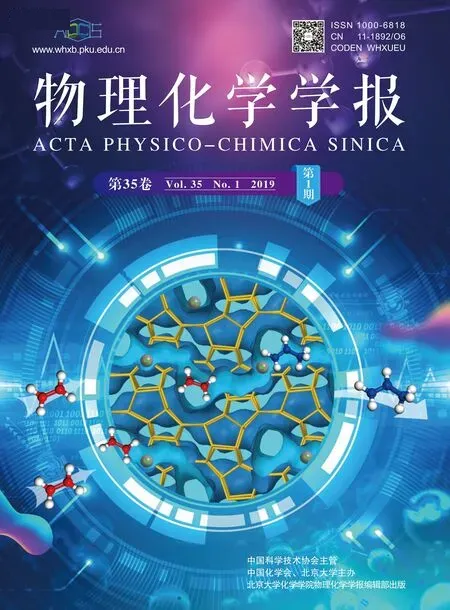First-Principles Study of Mixed Cation Methylammonium-Formamidinium Hybrid Perovskite
BI Fuzhen , ZHENG Xiao , YAM Chiyung
1 Hefei National Laboratory for Physical Sciences at the Microscale, Department of Chemical Physics, University of Science and Technology of China, Hefei 230026, P. R. China.
2 Beijing Computational Science Research Center, Beijing 100094, P. R. China.
Abstract: Organic-inorganic hybrid perovskites have attracted substantial attention due to their outstanding performance in solar energy conversion and optoelectronic applications. However, the poor stability of organic lead halide perovskites (APbX3, A∶ organic cations; X∶ halide anions) hinders their practical application. Compositional engineering, optimizing the concentration of different A and/or X, is one of the most effective ways to enhance the stability of APbX3. In particular, mixing formamidinium (FA) and methylammonium (MA)cations has been widely investigated. Here, we performed first-principles calculations to systematically investigate the structures and optical properties of FA1-xMAxPbI3. We obtained several stable crystal structures of FA1-xMAxPbI3 in the cubic phase for different ratios of FA and MA cations. By analyzing the structures of these mixed cation perovskites, we revealed that the lattice parameters decreased linearly with increasing concentration of MA cations,which was consistent with previous experimental results. For APbX3 perovskites, the Goldschmidt tolerance factor has been shown to be an effective index for predicting the stability. The mixing of organic cations is an effective method for adjusting this factor and thus the stability of these perovskite materials. In this work, the formation energy difference (ΔE)was calculated and our results showed that mixing of FA and MA cations could increase the thermodynamic stability compared to pure FAPbI3 and MAPbI3. FA0.5MA0.5PbI3 was found to be the most stable of all composites investigated.Furthermore, the band gap decreased with increasing proportion of FA cations, indicating an effective strategy for extending the absorption range of organic-inorganic hybrid perovskites into the infra-red region of the solar spectrum. By analyzing the Pb―I bond lengths for different FA ∶ MA ratios, we showed that the decrease of band gap mainly comes from the increase of the maximum valence band energy. In addition, the effective masses were similar, irrespective of the cation mixture, indicating that the mixing of organic cations does not affect the carrier transport mechanism in this material.Density of states (DOS) analysis revealed that the DOS of valence band edge increased with increasing proportion of FA cations, enhancing transitions between the valence and conduction bands. Finally, detailed analysis of the optical absorption coefficients of all composition was performed; the absorption spectra were blue shifted with increasing MA cation concentration. These results demonstrated the possibility of controlling the optoelectronic properties of organometallic lead halide perovskites by mixing FA and MA cations and hence, further improving the efficiency of perovskite solar cells.
Key Words: First-principle calculations; Organic-inorganic hybrid perovskite; Compositional engineering;Electronic structure theory; Optical properties


